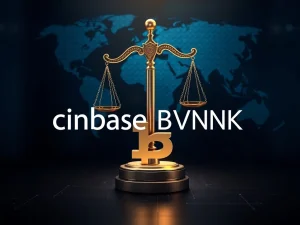SEC: Crucial Clarity on Crypto Staking Not Being a Security

Big news shaking up the crypto world! The US Securities and Exchange Commission (SEC) staff has issued significant guidance concerning crypto staking activities, particularly on Proof-of-Stake blockchains. This move aims to provide much-needed clarity for participants in the crypto space, though it hasn’t been met with universal agreement within the commission itself.
SEC Staff Statement: Is Crypto Staking a Security?
The SEC’s Division of Corporation Finance recently released a staff statement addressing common forms of crypto staking. The core message is that certain “Protocol Staking Activities,” where crypto is staked directly on a Proof-of-Stake blockchain, do not require registration under the Securities Act. Furthermore, these activities are deemed not to fall under the act’s registration exemptions either.
The staff’s rationale centers on the nature of staking rewards. They view these rewards as compensation for services provided by node operators, essential for network consensus and security. This differs from profits derived solely from the “entrepreneurial or managerial efforts of others,” which is a key component in determining if something is an investment contract, and thus a security, under the Howey test.
What About Custodial Staking and Ancillary Services?
The guidance also touched upon other related activities:
- Custodial Staking: The staff stated that custodial staking activities also do not qualify as securities offerings. Their reasoning is that custodians act merely as agents assisting with staking and do not have a direct role in the decisions around how much is staked or the operational aspects that would typically signify an investment contract.
- Ancillary Staking Services: Services like slashing (penalties for node misbehavior), early unbonding (unstaking before the lock-up period ends), and alternative rewards payment schedules were also addressed. The staff considers these “merely administrative or ministerial in nature” and not indicative of a security.
What Wasn’t Covered and What Does This Mean?
It’s important to note what the staff guidance did *not* cover. Other forms of staking, such as liquid staking and restaking, were not addressed in this statement. The statement also explicitly mentions that it “has no legal force or effect,” meaning it’s staff interpretation, not formal rule-making or commission action.
This guidance comes after calls from the crypto industry for regulatory certainty, particularly for Web3 infrastructure providers involved in staking services.
Differing Views within the SEC on Staking Regulation
The guidance has highlighted existing divisions within the SEC regarding crypto regulation.
- Commissioner Hester Peirce (In Favor): Often referred to as “Crypto Mom,” Commissioner Peirce welcomed the guidance. She believes it offers “welcome clarity for stakers and staking-as-a-service providers” and addresses regulatory uncertainty that has discouraged Americans from participating in staking. Peirce argues that this uncertainty has negatively impacted the decentralization, censorship resistance, and credible neutrality of Proof-of-Stake blockchains.
- Commissioner Caroline Crenshaw (Against): Commissioner Crenshaw, the sole Democrat commissioner, strongly criticized the guidance. She contends it “fails to deliver a reliable roadmap” for determining if a staking service constitutes an investment contract under the Howey test. Crenshaw stated that the staff’s analysis doesn’t align with court decisions on staking or the long-standing Howey precedent, calling it “yet another example of the SEC’s ongoing fake it till we make it approach to crypto – taking action based on anticipation of future changes while ignoring existing law.”
Conclusion: Clarity or Confusion?
While the SEC staff’s statement provides a degree of clarity for common crypto staking activities on Proof-of-Stake networks, particularly regarding their status as non-securities, the internal disagreement among commissioners underscores the ongoing regulatory uncertainty in the United States. For now, participants in typical protocol staking activities can find some relief, but the debate over crypto regulation, especially concerning staking, is clearly far from settled.







